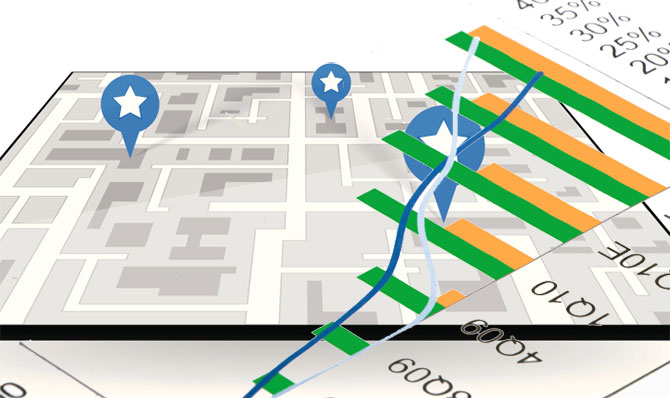Tell More, Sell More: How Local Search Information Drives Sales
Consumers are hungry for information about local product and service offerings, and the information they obtain from local search is a key factor in determining which local businesses they will shop in-person and eventually buy from.
According to an exhaustive study commissioned by Google, three out of four search users were likely to visit a brick and mortar store as a result of obtaining helpful information online. The most sought-after information includes:
- The price of the product being searched for.
- The location of the closest retail store having the product in stock.
- Specific store information such as location, phone number, and business hours.
- Details about other products available at the store.
How Local Search Affects Shopping Habits
Today’s tech-savvy consumers are spending an estimated 15 hours per week researching products and businesses on a variety of devices, including smartphones, desktops and tablets before they even set foot in an actual store. The result is an evolving change in the mindset of how consumers view the shopping experience.
According to information supplied by Shoppertrak and MasterCard’s SpendPulse report, holiday store visits declined by 55 percent over a recent three year period while the value of each store visit doubled. The explanation? While shoppers made fewer visits, they were better informed about the products they were interested in before visiting the store. This advance preparation made each visit more focused and purpose-driven, and consumers ended up buying more.
Local Search Drives In-store Traffic
An estimated 50 percent of consumers who perform a local search on their smartphone will visit a store within 24 hours. As Scott Zalaznik, Sprint’s vice president of digital, so aptly puts it, “Ninety percent of our customers start their journey online but buy in-store.”
While some shoppers continue to see the local store as a place to browse the merchandise and pick the brains of the experts, a growing number see the store as a glorified distribution center where products that have been researched in advance can be picked up quickly and easily.
Smartphones are the New In-store Shopping Assistant
Consumers who have been spoiled with the wealth of information available online are frequently frustrated by the lack of readily available in-store information. As many as two-thirds of shoppers reported difficulties in obtaining the product information they need while at the store.
As a result, many shoppers are turning to their smartphones to help fill the information gap, with 42 percent continuing their online research during store visits. Of this group, almost 50 percent use the retailer’s own website or app to provide the information they need. An estimated one in three shoppers reportedly prefer to use their smartphone rather than ask a store employee for help.
Even those consumers who use an in-store visit to browse with the intent to purchase online later are likely using their smartphone to facilitate their research, and should be provided with all the information needed to make an eventual purchase decision.
The Need for Updated Measurement
While consumer buying patterns have radically changed, many marketers have failed to update their thinking when it comes to measuring the impact of local search on driving in-store transactions. As a result, local search is frequently short-changed when it comes to receiving credit for driving sales. Macys.com is one pioneering retailer that takes special care to measure the true impact of local search on sales, concluding that every dollar invested in search is directly tied to six dollars in in-store sales.










